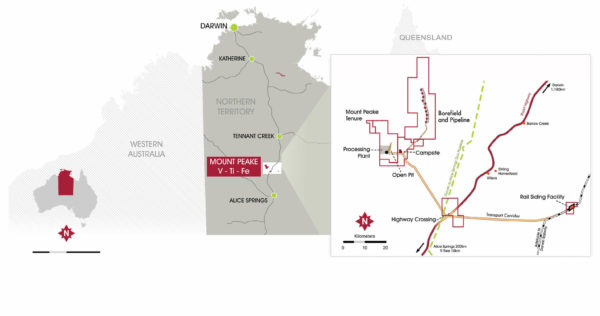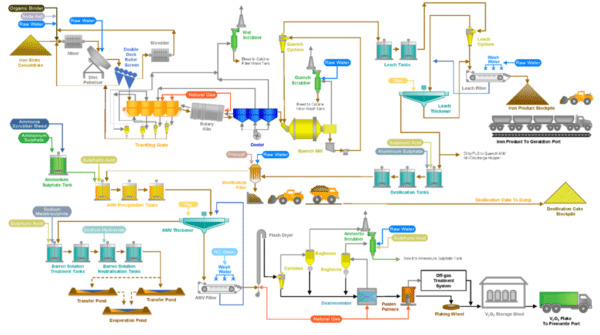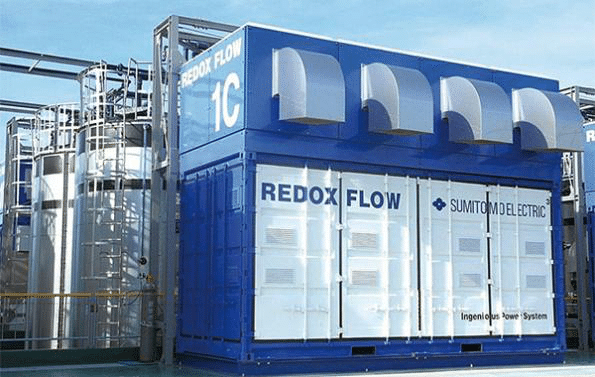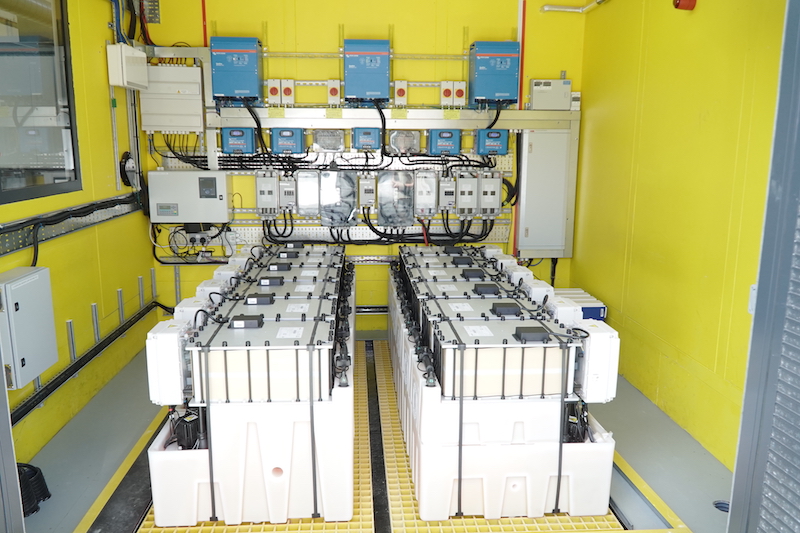Despite the technology being pioneered right here on Australian soil almost 40 years ago, vanadium redox flow batteries are still striving to establish themselves as major players in Australian energy storage markets. Today that venture has experienced another push – with two of Australia’s budding vanadium producers both announcing news of their developing strategies.
Fittingly, the two companies both seem to be moving in similar veins – taking notes from the other as they both forge forward on Australia’s lesser travelled energy storage path.
TNG Limited
Australian mining technology company TNG Limited, which owns the world’s most advanced vanadium project – the Mount Peake Vanadium-Titanium-Iron Project (Mount Peake Project), has agreed to a joint venture with major Singapore-based vanadium redox flow battery manufacturer, V-Flow Tech.
Under the proposed joint venture, TNG and V-Flow will collaborate on the development and delivery of new energy power systems underpinned by vanadium redox flow batteries, with V-Flow supplying the battery systems, and TNG supplying the high-purity vanadium electrolyte required to operate the batteries.
The vanadium electrolyte will be supplied from TNG’s Mount Peake Project, which is located 230km north of Alice Springs in the Northern Territory. It is set to produce around 6,000 tonnes of vanadium pentoxide to be used for vanadium redox flow batteries every year.

Image: TNG
The joint venture’s aim is to create green power systems targeted to remote sites in regional Australia. Currently, much of regional Australia is powered by diesel generators – but TNG argues flow batteries are a cleaner, more economically viable alternative for Indigenous communities, pastoral stations, road houses and mine sites.
The establishment of the joint venture, which is still being formally negotiated, will represent a major step towards TNG achieving its vision of becoming a commercial supplier of vanadium redox flow battery systems in Australia, it said in its ASX announcement today.
Australian Vanadium
Australian Vanadium (ASX: AVL) is also vying to become a commercial supplier of vanadium flow batteries in Australia, developing the strategy through its subsidiary company VSUN.
Funnily, VSUN has been supplying VRFBs through its battery manufacturing partner (surprise surprise) V-Flow Tech for some time.
In another synchronicity, but this time in the opposite direction – Australian Vanadium is following in TNG’s footsteps, filing a patent application for its vanadium processing route. (TNG’s proprietary TIVAN process for the extraction and recovery of high-purity vanadium is already patented. It is considerably different from Australia Vanadium’s route though – with the TIVAN process involving acid, where Australia’s Vanadium’s is based on roast and water leach.)

Australian Vanadium
On Monday, Australian Vanadium announced it had submitted a provisional patent application for its vanadium processing route. The patent application relates to a method for preparing high-purity vanadium pentoxide.
“The processing circuit is at the core of AVL’s ongoing BFS engineering study as part of the Company’s plans to develop the Australian Vanadium Project at Gabanintha, in Western Australia,” the company said in a statement.
The application begins a 12- month period in which a patent application can be filed claiming priority.
Flow batteries – a brief explainer
Flow batteries are an intrinsically different beast to the predominant lithium-ion batteries, which are the domain of giants like Tesla. Lithium-ion batteries are what’s known as solid-state batteries, storing energy in metal.
Flow batteries, on the other hand, store energy in electrolyte liquids. They are usually designed to have two tanks, one containing a positively-charged anode and the other with a negatively-charged cathode, separated by a membrane.
Using liquids allows flow batteries to produce electrical currents without degradation, giving the batteries a longer cycle life and allowing them to store charge for longer periods compared to lithium-ion batteries. It also makes them non-flammable and well-suited to the tough conditions in Australia’s outback.

Image: TNG
Flow batteries can also be fully discharged without damage, and are easily scaleable – able to be fitted to one another to increase capacity.
Their pitfall? Size. Tanks of fluid can, by nature, only be made so small. Which is part of the reason lithium-ion batteries have been far quicker out the gate – we’ve needed small, high-powered batteries a lot longer than we have utility-scale ones. Despite being arguably less well suited for larger scale applications, lithium-ion batteries have benefited massively from their ubiquity and visibility, having been used for decades in our phones, laptop chargers and now in our EVs.
Companies like TNG and Australian Vanadium, as well as others like Redflow, are working hard to establish flow batteries in the market though– which is no easy feat given humans’ tendency to continue on established paths.
Nonetheless, the market for flow batteries has recently experienced massive surges worldwide as cognisance grows about how battery makeup affects its applications. In other words, as the energy storage market grows, so too is market acceptance of flow batteries.
This content is protected by copyright and may not be reused. If you want to cooperate with us and would like to reuse some of our content, please contact: editors@pv-magazine.com.









Don’t forget Ultra Power Systems in Perth are producing VRFB in Perth.